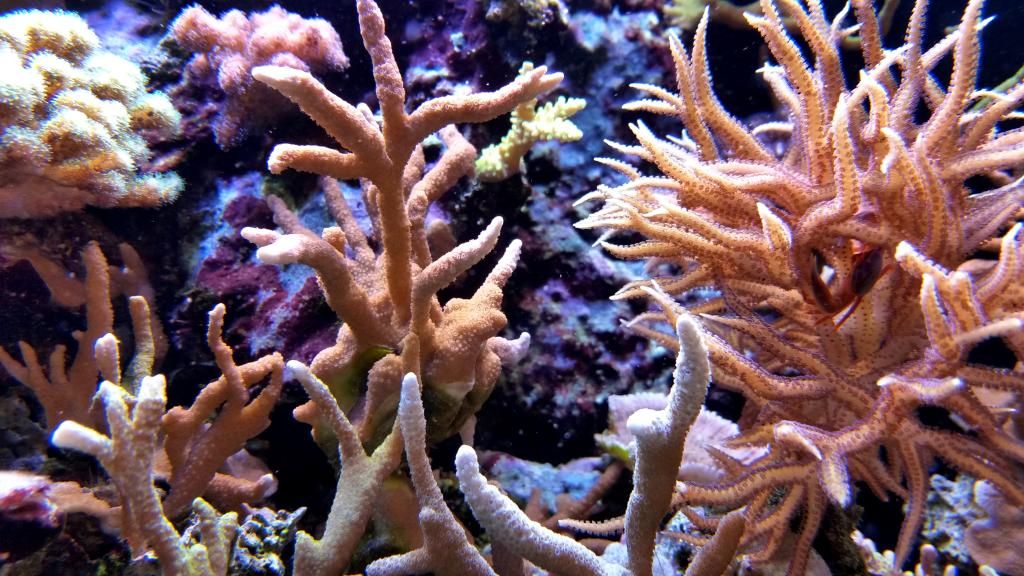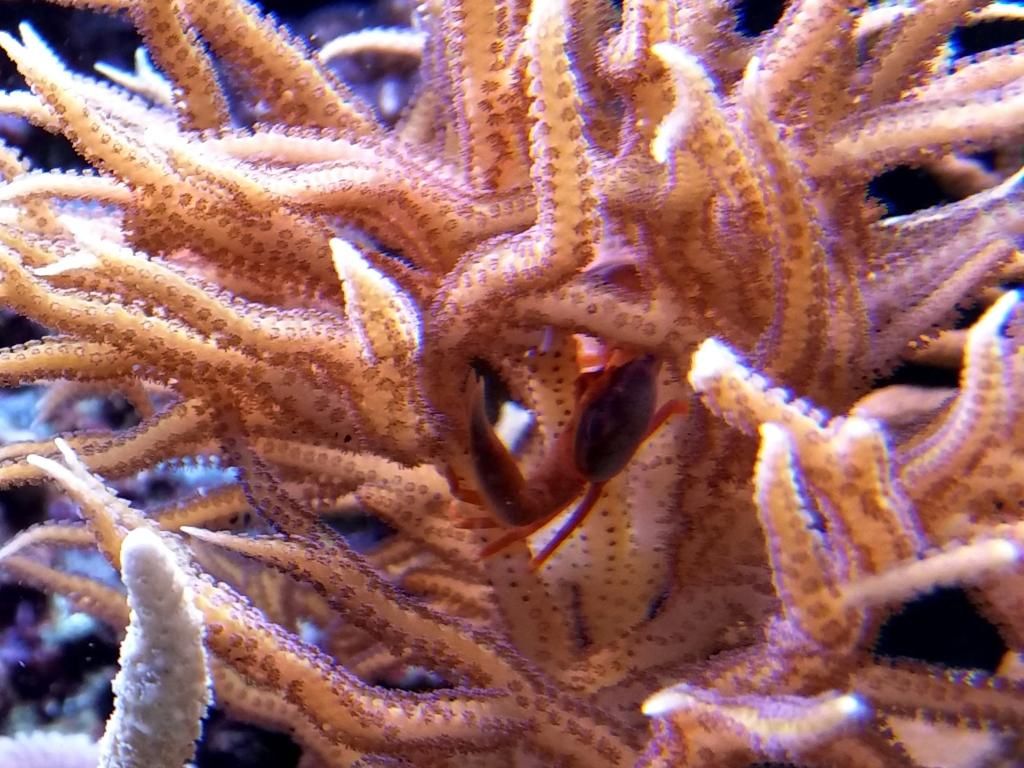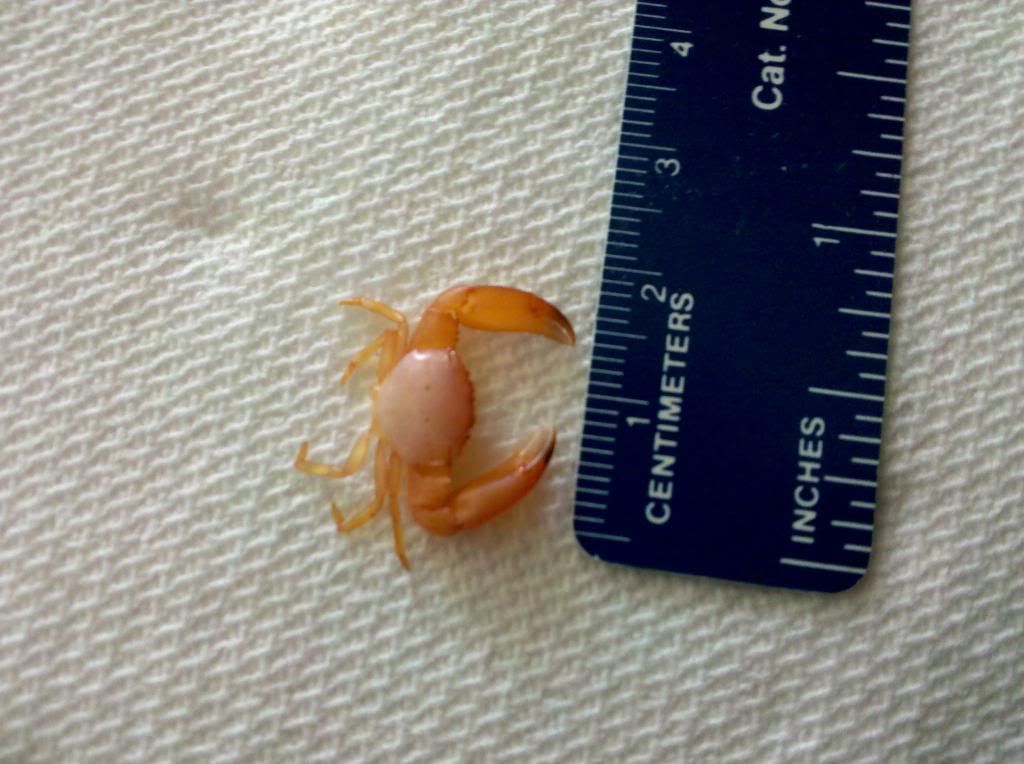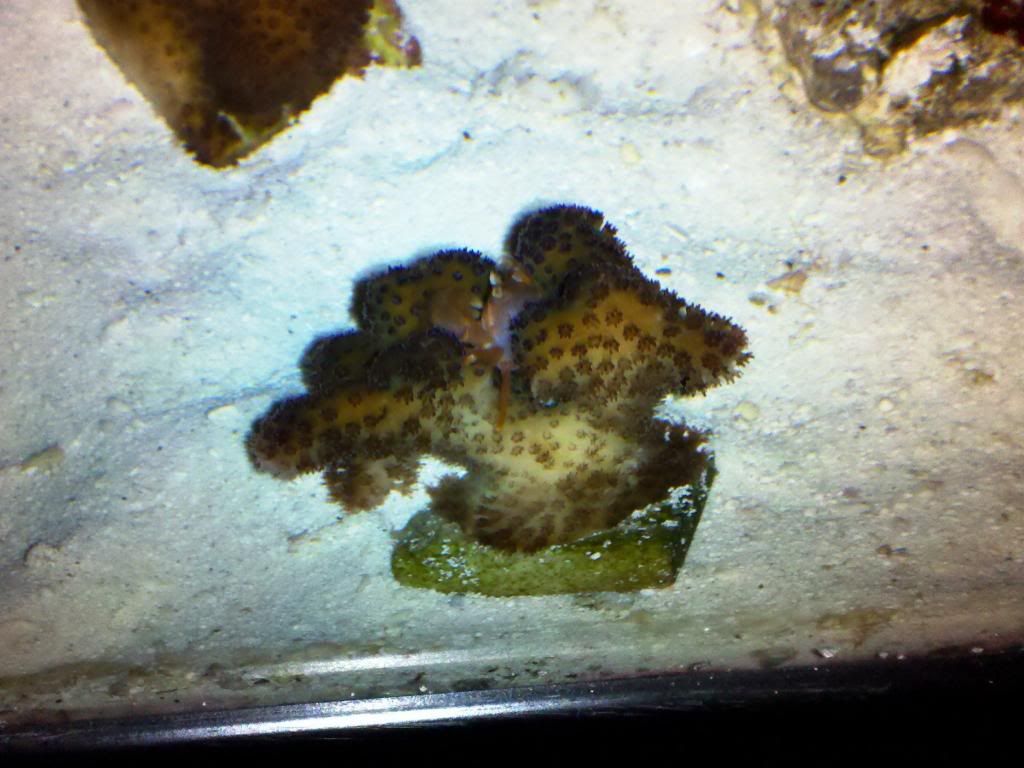Oxylebius
Well-Known Member
Another great article on coral crabs!
Smithsonian Articles and Research
http://newsdesk.si.edu/releases/smi...-coral-s-best-defender-against-army-sea-stars
http://newsdesk.si.edu/photos/coral-guard-crabs-t-serenei
Coral reefs face a suite of perilous threats in today’s ocean. From overfishing and pollution to coastal development and climate change, fragile coral ecosystems are disappearing at unprecedented rates around the world. Despite this trend, some species of corals surrounding the island of Moorea in French Polynesia have a natural protector in their tropical environment: coral guard-crabs.
New research highlighting the role of diversity in the healthy functioning of coral reef ecosystems, showing that guard-crab species and size classes offer different kinds of effective protection against various threats to coral reefs.
More Articles
http://www.aquariumofpacific.org/onlinelearningcenter/species/coral_crab1
At one time coral crabs belonging to the genus Trapezia, Tetralia, and Domecia were thought to be ectoparasites, living off of the tissues of the coral. Then it was discovered that these little crabs actually protected the coral in which they lived from predators, such as the crown-of-thorns sea star (Acanthaster planci). When the sea star begins to climb over a branching coral, these little crabs move to intercept it, pinching the sea star’s tube feet. The pain forces the sea star to crawl away, defeated.
When coral crabs are removed from their host coral, the lower branches become covered with algae, sponges, and tunicates. It has been speculated that movements of the crabs lower down in the coral colony increase water circulation and prevent detritus from accumulating in and on the coral’s branches.
http://www.fishchannel.com/saltwater-aquariums/reefkeeping/coral-crabs.aspx
Trapezia and other commensal crabs found in the branches of stony corals offer definite benefits to the coral. The next time you are lucky enough to acquire a coral colony with one or more of these beneficial crabs present, please do not recoil in horror, but rather leave them in place and your coral will thank you.
Coral Commensal Crab ID Page
http://www.chucksaddiction.com/coral_crabs.html
EDIT: Updated link for the ID page here: http://chucksaddiction.thefishestate.net/coral_crabs.html
And one of my Coral Crabs!

Smithsonian Articles and Research
http://newsdesk.si.edu/releases/smi...-coral-s-best-defender-against-army-sea-stars
http://newsdesk.si.edu/photos/coral-guard-crabs-t-serenei
Coral reefs face a suite of perilous threats in today’s ocean. From overfishing and pollution to coastal development and climate change, fragile coral ecosystems are disappearing at unprecedented rates around the world. Despite this trend, some species of corals surrounding the island of Moorea in French Polynesia have a natural protector in their tropical environment: coral guard-crabs.
New research highlighting the role of diversity in the healthy functioning of coral reef ecosystems, showing that guard-crab species and size classes offer different kinds of effective protection against various threats to coral reefs.
More Articles
http://www.aquariumofpacific.org/onlinelearningcenter/species/coral_crab1
At one time coral crabs belonging to the genus Trapezia, Tetralia, and Domecia were thought to be ectoparasites, living off of the tissues of the coral. Then it was discovered that these little crabs actually protected the coral in which they lived from predators, such as the crown-of-thorns sea star (Acanthaster planci). When the sea star begins to climb over a branching coral, these little crabs move to intercept it, pinching the sea star’s tube feet. The pain forces the sea star to crawl away, defeated.
When coral crabs are removed from their host coral, the lower branches become covered with algae, sponges, and tunicates. It has been speculated that movements of the crabs lower down in the coral colony increase water circulation and prevent detritus from accumulating in and on the coral’s branches.
http://www.fishchannel.com/saltwater-aquariums/reefkeeping/coral-crabs.aspx
Trapezia and other commensal crabs found in the branches of stony corals offer definite benefits to the coral. The next time you are lucky enough to acquire a coral colony with one or more of these beneficial crabs present, please do not recoil in horror, but rather leave them in place and your coral will thank you.
Coral Commensal Crab ID Page
http://www.chucksaddiction.com/coral_crabs.html
EDIT: Updated link for the ID page here: http://chucksaddiction.thefishestate.net/coral_crabs.html
And one of my Coral Crabs!

Last edited:





 No, I was thinking it
No, I was thinking it 